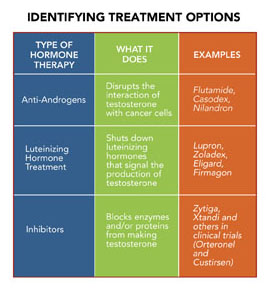
When it comes to prostate cancer treatments, there are many options. The first phase of treatment is called watchful waiting. This is often recommended for men over 65 years of age, and in those with serious health problems. This treatment involves monitoring symptoms, and may include blood tests, imaging tests, and biopsies. If changes occur, doctors may recommend active therapy. Some of these options have side effects. The following are some of the most common ones:
Radiation therapy is one of the most commonly used treatments for prostate cancer. External beam radiation involves inserting radioactive sources into the prostate to attack the cancer. The seeds emit radiation in the area of insertion, which can be very effective in preventing further prostate tumor growth. Some low-dose seeds stay in the prostate for a year, while high-dose radiation is left inside the body for just 30 minutes. This form of therapy may need to be repeated several times, depending on the patient's symptoms and response to treatment.
Internal radiation therapy (IRT) uses radioactive seeds to treat prostate cancer. This treatment uses x-rays to target the tumor. The doctor will use imaging scans to determine the placement of the radioactive material. Depending on the type of prostate cancer, brachytherapy and IRT can be combined. The type of treatment that is recommended for you will depend on your symptoms and the type of cancer. However, if your condition has progressed or has spread beyond the prostate, your doctor may recommend systemic treatment. These may include chemotherapy, hormone therapy with androgen deprivation, and immunotherapy.
Although prostate cancer can be cured, its advanced stages cannot be cured. Luckily, there are treatment options on the ourvoice.or.id health site that can prolong your life and ease your symptoms. Some of the treatments are very effective in reducing pain, while others can reduce your symptoms. Bisphosphonates can also reduce bone pain and bone loss. Some doctors use chemotherapy to treat metastatic prostate cancer. This drug kills cancer cells and prevents them from multiplying. While this treatment has some side effects, it can help keep prostate cancer under control and relieve symptoms.
While expectant management is not the ideal treatment for everyone, it may be the best option for some people. If you have symptoms of prostate cancer, a higher dose of radiation may be needed. It is important to note that the more aggressive treatment you choose, the more likely the cancer will return. You should consult your doctor before choosing this option to reduce the chance of a relapse. It is extremely important to seek proper medical advice for any potential side effects.
If your cancer has spread to other parts of the body, chemotherapy may be the best option. If the cancer has spread outside the prostate, this treatment may be the best option for you. Once your cancer has spread to other parts of your body, you may need surgery or radiation therapy. It is important to know that your doctors will be watching you throughout your treatment. This is because surgery can lead to worsening of symptoms.
Another type of treatment is expectant management. This is a great option for the elderly or people with serious illnesses. It does not include routine PSA or DRE tests. You can still receive hormone therapy if you have symptoms. In some cases, watchful waiting is not the best option at all. If you suffer from prostate cancer, expectant management is not the best option for you. There are other treatments that will be prescribed and your doctor will recommend the best ones for you.
When it comes to prostate cancer treatment, the choice is yours. You may be a candidate for surgery, or you may already be in the early stages of the disease. If you don't have time for a surgical procedure, you can choose to have radioactive seeds implanted. In any case, it is important to ask about treatment options and which one is best for you. If you have a history of cancer, you can ask your doctor about it.
